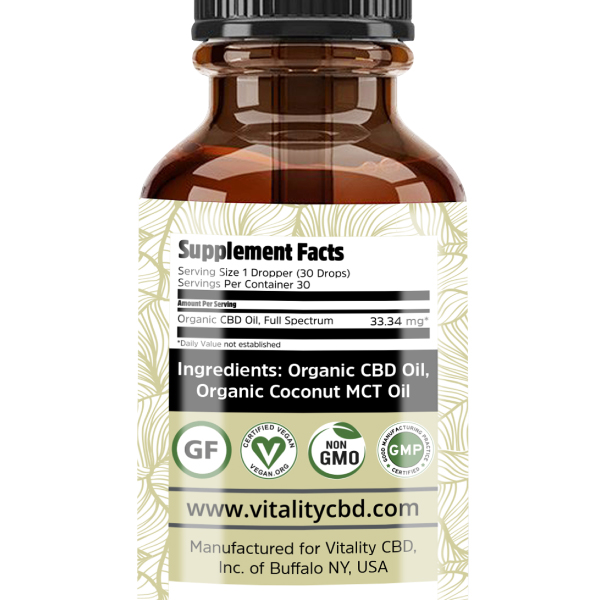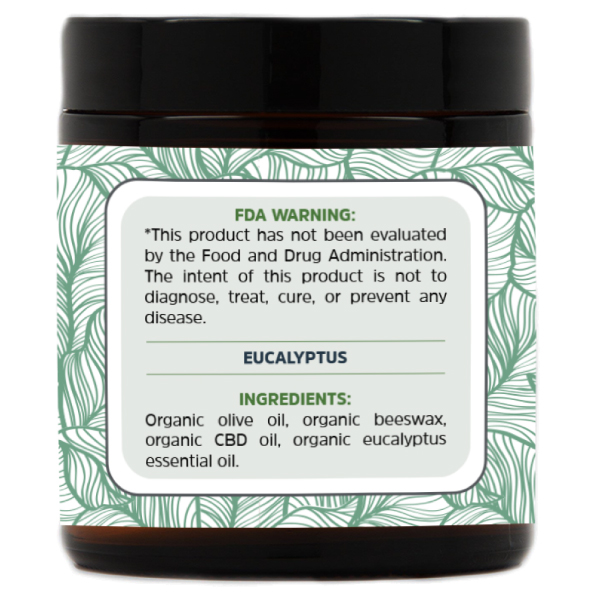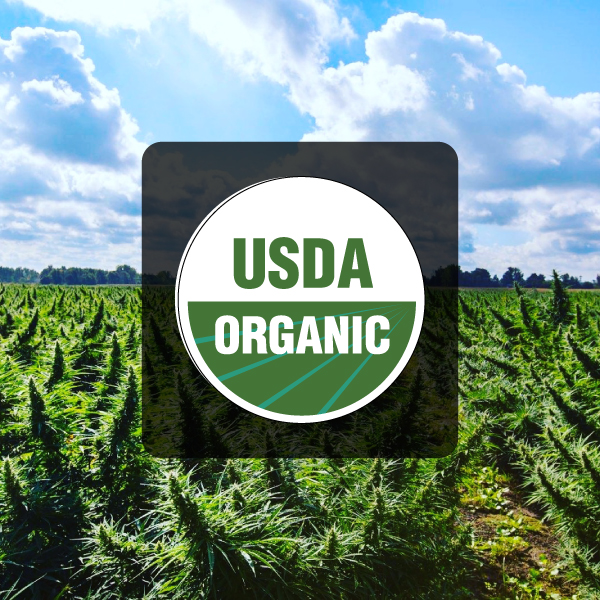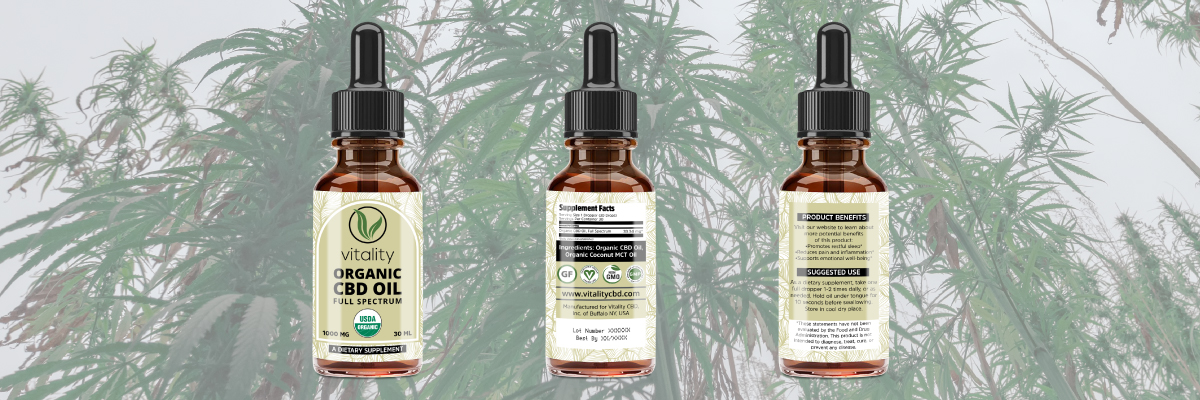
CBD Product Labels
How to Read CBD Product Labels
The most confusing thing about choosing a CBD product might be decoding the labels. With little regulation in the still-new hemp industry, it can be hard to compare one product to another based on CBD product labels alone. At Vitality CBD, we want to make it easy for you to find the products you need and understand what you're buying.
CBD Dosing Based on Potency
(And Desired Effects)Two of the most important things to look at when reading a CBD product label are potency and dosage. Most CBD product labels state the concentration of CBD in milligrams somewhere on the package. The first thing to decipher is whether this number refers to the amount of CBD per dose, or the amount of CBD in the entire package. Good companies will give you both figures.
Knowing how much CBD you’re getting, and how much is in each dose or serving, is crucial to understanding which product is best for your needs. Our products clearly state the amount of CBD in the entire package on the front of the label, and the suggested dose per serving on the back.
However, dosing recommendations listed on CBD packages are not comprehensive. There are far too many variables that go into figuring out what the best dosage is for your specific needs. For that, we built out this CBD dosing guide.
Ingredients Based on Volume
When you pick up a bottle of CBD Oil or a jar of Topical CBD Salve, there's always a list of ingredients. If there isn't, do not ever buy that product. The ingredient label states what individual components make up the overall product. In the more regulated food industry, the order of the ingredients listed is very important to the educated consumer. The first ingredient listed is typically the most prominent ingredient. With the last ingredient being the least prominent.
In short, you start with the largest ingredient by volume and end with the smallest ingredient by volume. A lot of people don't know that, but it's how ingredient labels are done.
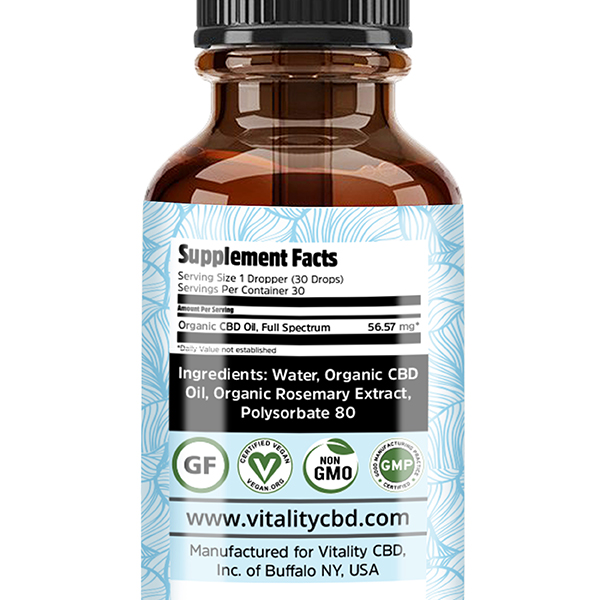
CBD vs. Hemp Extract
When reading a CBD product label, it’s important to discern whether the potency information refers to the amount of hemp extract, or to the amount of active CBD in the product. All our CBD products are made with full-spectrum whole plant hemp extract. Such extracts contains a variety of cannabinoids, terpenes, and polyphenols found in the hemp plant, as well as CBD.
For producers that list the quantity of Hemp Extract on their labels, instead of the CBD oil content, there's a big discrepancy. A discrepancy that many are not aware. If you list Hemp Extract, instead of CBD, on your label, it generally means the at the actual amount of CBD in the product is lower. Generally speaking, only a fraction of the MG level listed on their bottles is actual Active CBD content (usually 25% or less).
We find that rather deceptive, don't you? That's why we don't use such a labeling practice.
CBD Oil > Hemp Extract
CBD Oils are more bio-available than Hemp Extracts as there is less carrier oil in the mix (less filler). While many CBD oil labels typically list the amount of full-spectrum extract in their product, ours do not. They list the value of full-spectrum CBD and there's a difference.
At Vitality CBD, the level of active CBD found within our full-spectrum CBD only varies by the milligram value printed clearly on the label.
When our USDA Organic 1000 MG Full-Spectrum CBD Oil says it contains 1000 MG of CBD per bottle, it does. Generally, our products are slightly over-proofed (due to hard to control batch variations). We don't factor in the smattering of other cannabinoids within that figure. Although, we do feel it necessary to state our CBD came from a full-spectrum extraction. Pure CBD isolates contain near 100% pure CBD. The CBD extract we mix into our carrier oil contains around >97% Pure CBD. The the other <3% contains various other cannabinoids.
Why don't we list those of cannabinoids on the ingredient label? Because the quantities of other cannabinoids are considerably smaller, and because it's currently not required by law. But the main reason, is we just can't fit it on a label. Some are too small to even bother listing.
Not all cannabinoids are as present as others in industrial hemp plants. The most prominent by a long shot is CBD, and everything else is found in considerably smaller fractions of the total.
Honest Labeling Practices
It's not for any deceptive reason we don't list those other values on the label. It's because they are so small and so numerous, that the label would be in size one font and you'd need glasses or a magnifying glass to have any hopes of reading it. That said, we do publish the values of those other cannabinoids in our publicly shared third-party lab reports.
The only other cannabinoid measurement we state on our packaging is the THC content by volume. We do so because it is a requirement by law to have less than 0.3% THC by volume and to have it clearly printed on the label. We also include QR codes that lead to lab testing reports on any boxes that accompany our products to make finding the label reports easy.
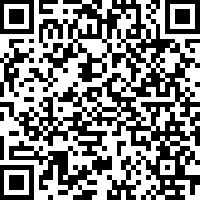
Third-Party Lab Testing
After you find the potency and type of CBD product that suits your needs, it’s important to ensure that the product is lab tested by independent third-party labs to verify that the information stated on the label is true. There is no actual way for a third-party lab to verify the quantity of hemp extract in a product. They can only measure the cannabinoids present (as well as the lack of harmful solvents present).
In such a new and unregulated market, independent third-party lab testing is the only way to confirm that what you see is what you get. Other things to look for to make sure you’re getting a high quality product is organic certification and certified good manufacturing practices.
USDA Certified Organic by Eco-Cert
Vitality CBD was one of the first, and is still one of very few, CBD brands certified organic by the USDA. The USDA's Organic Certification ensures consistent agricultural practices throughout all food and dietary supplement industries. Currently, the CBD product industry is one of the newer and less regulated industries, however, that does not mean it's impossible to get a certification. The USDA Organic seal can only be used by organizations meet strict standards. The US Dept. of Agriculture contracts third-party organizations like Eco-Cert to evaluate farms and bottling facilities to ensure no inorganic elements make it into the final product.
About Vitality CBD™
Vitality CBD exists to provide a healthy and natural alternative to the pharmaceutical industry. We embrace charity, sustainability, quality, trustworthiness, and domestic sourcing as our core operational values. All our CBD products are grown, harvested, extracted, and bottled all in American owned and operated facilities. Vitality CBD products are certified Non-GMO, Organic, Vegan, and Gluten-Free. Take 20% off your first online order with code FT20 today!

